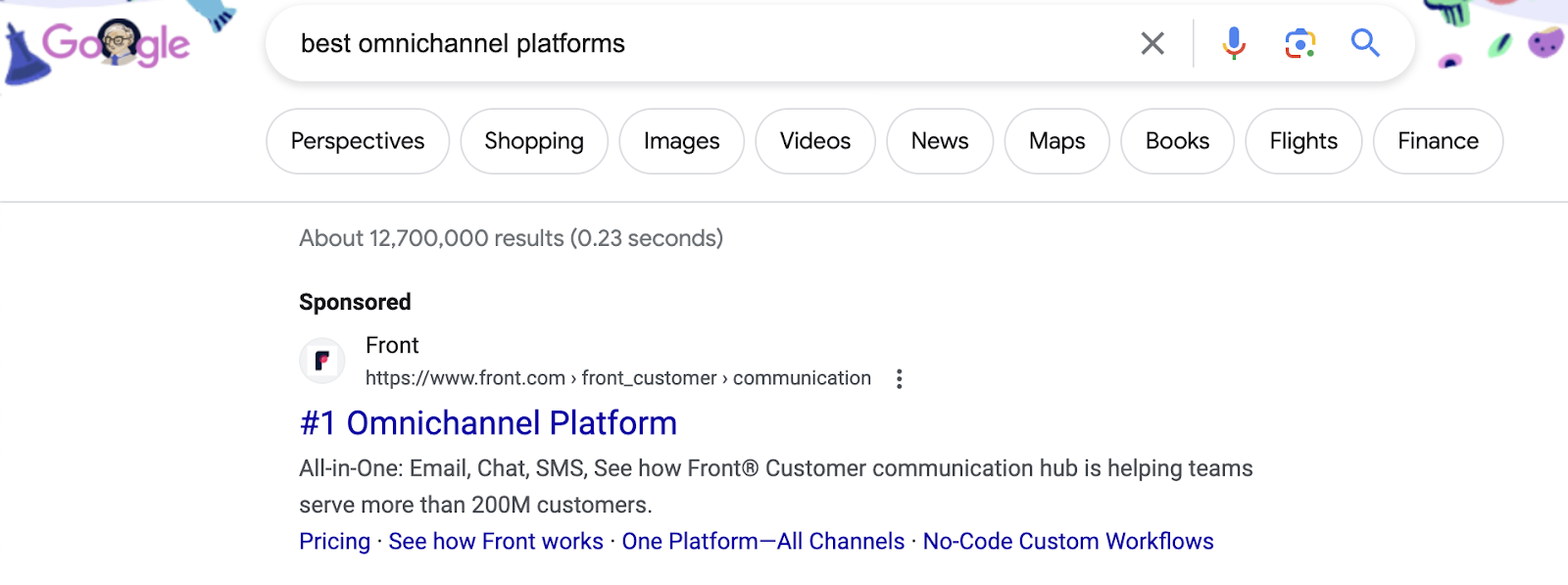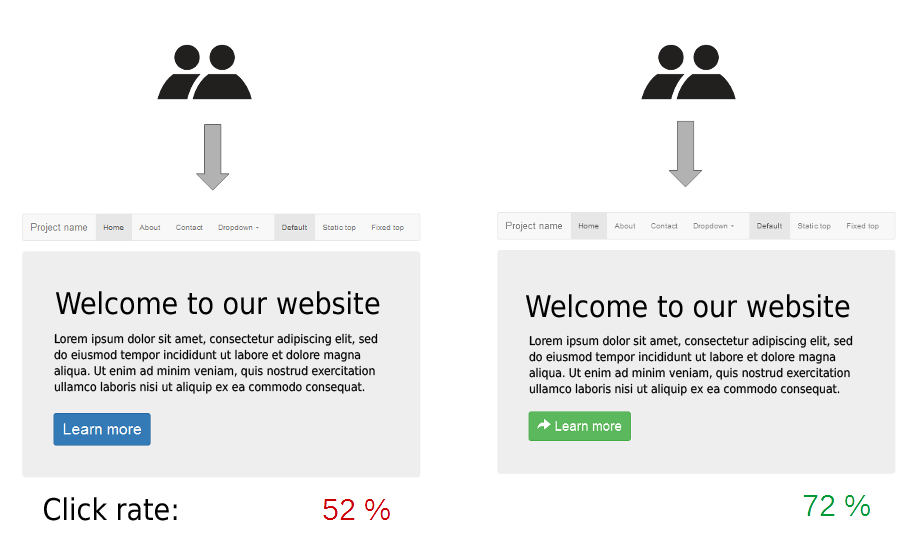Cost Per Lead (CPL): Definition, Formula, Examples & More!

Advertising and marketing campaigns play an essential role in finding new customers for your business, but how can you know if those campaigns are working effectively?
Keep in mind that if you’re attracting new customers but paying more than they are worth in ad spend, it could mean a wholly unsustainable future for your company.
Fortunately, there is an easy yet robust way to measure how cost-effective your marketing campaigns are. Cost Per Lead, or CPL, is a metric that will tell you whether your efforts and marketing spend are paying off.
In this blog post, we’ll take a deep dive into CPL, from what it is to how to manage it. Once you start tracking your Cost Per Lead, you can build more compelling marketing campaigns and attract more leads for less money.
What is Cost Per Lead?
Before we talk about Cost Per Lead, you should define what a lead is for your business. Most businesses define a lead as an individual or organization interested in a company’s products or services. They express their interest by voluntarily giving some of their contact details (i.e., email, phone number, social accounts) in exchange for an offer, trial, or more information about your product/ service.
The definition of lead can vary in different businesses and industries. Nevertheless, a lead typically is someone keen on your company’s offers but may not be ready to purchase yet.
From that, Cost Per Lead (CPL) is defined as the amount of money you spend to generate a single new lead for your business.

Cost Per Lead is used to measure and monitor the effectiveness of marketing campaigns. Its purpose is to provide your marketing team with a tangible dollar figure, so you can understand how much money to spend on acquiring new leads. As we mentioned above, if you are spending more money on acquiring a new lead than earning from having that lead become a paying customer, there must be something wrong, right?
The CPL metric also provides essential data to use in your return on marketing investment calculation. Actually, each stage of the buying funnel should have similar metrics associated with it, like cost per visitor and cost per win. Likewise, you can use these metrics to monitor individual campaigns, such as banner ads, AdWords, social ads, or all of your marketing efforts.
The importance of Cost Per Lead
Even if you’re already doing a great job at generating leads, taking the time to calculate your CPL will give you worthwhile insight into how your business works.
Cost Per Lead is truly variable when it comes to understanding the effectiveness of your marketing strategies. It is a great indicator of what is working and what is not, helping you make choices about focusing your efforts going forward. If you ignore your CPL, you’re taking a blind guess as to how effective your marketing is, likely sinking money into ineffective methods, or ignoring the ones performing well.
The way you glean these performance-based insights is relatively straightforward. Let’s say if your email newsletter has a CPL that is much higher than other marketing methods, you might want to look further into its results to see if it is a worthwhile investment in the future. On the other hand, if your Adwords campaigns have the lowest CPL of all your marketing strategies, you’re likely to prioritize similar ads in your marketing budget going forward.
How to calculate Cost Per Lead?
Calculating Cost Per Lead is relatively simple. You just need to divide the amount of money spent on a campaign during a defined period by the number of leads acquired through that campaign in the same period.
Cost Per Lead Formula:
Cost Per Lead = Total cost of the campaign / The number of lead generated
How to Track Leads?
One popular method for monitoring lead sources involves utilizing a UTM code, which is a tag added to a landing page’s URL. This enables Google Analytics to identify the specific ad campaign that directed visitors to the page, allowing you to tally the leads generated from individual campaigns.
Additionally, UTM codes can be employed to trace leads from various marketing channels beyond just advertisements. Consequently, this tool aids in calculating the cost per lead for each channel.
Cost Per Lead Example
For example, your marketing campaign in the month of February costs you $2,500, and you managed to generate 250 leads during the same month. The math goes like this: Cost Per Lead = $2500 / 125 = $20
That means your average Cost Per Lead is $20.
You can also calculate separate CPL metrics for different campaign platforms, such as email, social media, and search engines. This helps decide where to focus your marketing efforts, as the channel you choose can significantly affect your overall customer acquisition cost.
What is a good Cost Per Lead?
Defining a good CPL depends heavily on your ideal customer, market, competition, and specific business and industry.
If you want quality, a higher CPL might mean a higher quality lead and a lower overall customer acquisition cost. If you’re aiming for quantity, you might want to lower CPL, even if the leads aren’t as qualified.
However, if this is your inaugural digital marketing campaign or you are launching a new service, first set up analytics and a dashboard to track activities for about 60-90 days to set your performance benchmarks. Once you’ve got good data, adjust your spend, messaging, or tactics based on KPIs in order to determine a Cost Per Lead that aligns with your marketing objectives.
In fact, you can also compare your CPL to the average prices of leads across various industries and channels. By doing so, you’ll get a better idea of how much you should spend per lead. The data below is compiled by the Linchpin Team.
Average Cost per Lead by Industry
Understanding your cost per lead (CPL) is merely the initial step. By contrasting the CPL you’ve computed in the preceding stage with the industry standard, you can determine if you’re overspending or paying an appropriate amount for your leads.
To facilitate this process, GoConvert has compiled data from more than one hundred sources and reports to establish average CPLs across various industries.

Predictably, sectors dealing with higher-priced products or services such as marketing agencies and financial services exhibit higher CPLs, resulting in elevated customer acquisition costs, with an average CPL of $100. Conversely, industries like media and publishing boast the lowest average CPL, standing at $11.
9 Tips to Reduce Cost Per Lead
The precise techniques for effectively managing your CPL will depend on each channel. Each one of them is different and requires different strategies to help you find the most optimum cost.
However, some general methods apply to the majority of channels. Let’s explore!
1. Identify your target audience accurately
You may realize that your marketing campaign isn’t attracting as many leads as you like. It is giving your business a high CPL. So, what should you do to improve it?
First and foremost, you should narrow in on your target audience. You may not see results with a large target audience because you aren’t getting specific enough with your marketing campaign. To see better results, you should zero in on the people you want to reach.

Now, suppose you run a clothing business that sells men’s, women’s, and kid’s clothes. You would want to hone in one group (let’s say men) and create multiple subgroups with similar characteristics. You can base this information on demographics, socioeconomic status, amongst other criteria.
Then, you create ads and campaigns that appeal precisely to those groups. This makes sure that you won’t waste money trying to reach leads that are not interested.
Audience targeting is extremely beneficial to any campaign. It helps you deliver the right message to the right people at the right time. You can create a more efficient campaign for your business because your ad content will be more appealing to your audience.
2. Customize your campaign

One potential explanation for why you may not be generating as many leads for your investment is a lack of alignment between your ads and landing page. Message matching occurs when the promise made in the ad is fulfilled by the content on the landing page.
3. Focus on generating relevant content
If you want to drive conversions, you must deliver content that aligns with your audiences’ interests. Relevance is probably the most vital concept when it comes to digital marketing, especially when we talk about Google Ads.
A piece of content is considered relevant when two things are fulfilled:
-
You’ve selected the correct target audience. This means that you’re targeting people who could actually have a demand for your product/ service. For instance, targeting first-year students with an ad campaign for luxury homes is probably not relevant for them. However a mother with ads for baby food is much more asserted.
-
Your content transmits the right message to your target. Your content needs to be clear, straightforward and include the answer to the question, “Why do I need to buy your product? How is it going to benefit me?”
If your content reaches the people who could potentially be interested in it with the right message, more users will click on it. That also means that your click is going to be cheaper. As a result, you’ll reduce your CPL as well.
4. Spend time and money on high-performing keywords
In many cases, one of the critical ingredients of relevance is keywords, especially when it comes to Google ads. The term “keyword” is pretty self-explanatory. It’s a key word that describes your product to the public.

As a marketer, you should periodically sift through different keywords you’re spending money on and analyze their performance. Eliminate the ones that aren’t working, and tag and optimize the ones proven to drive conversions.
Keep in mind that every keyword has the ability to convert someone at some point. However, that doesn’t mean you should keep that keyword indefinitely. It can sometimes be nerve-wracking to get rid of a highly-searched keyword that has been getting a lot of clicks, but if it does not convert frequently enough, it is a waste of time.
Instead, you can try switching to a more targeted long-tail keyword. Although you might get fewer clicks, the people who click on that ad will probably convert at a higher rate.
5. Adjust keyword bids
Lower bids on keywords that yield conversions but result in a high CPL. This may decrease your ad’s average position but can increase exposure and clicks over time.

To streamline bid management and achieve your campaign goals more efficiently, Google provides Automated Bidding options, among which Google’s AI algorithm works to maximize the number of conversions your campaign generates within your specified budget.This automated approach frees you from constant bid monitoring and adjustment, allowing you to focus on other aspects of your marketing strategy while still optimizing performance.
6. Do retargeting
Retargeting is a great way to get leads to convert. Sometimes users see your ads and take an interest, but they just don’t act. A retargeted ad can help them convert into a customer.
These ads often cost very little to run and are really effective. When people see retargeted ads, they think of buying your products or using your services once again. Many times, it’s the final nudge they need to convert.
Retargeted ads help your business drive more conversions. More conversions mean that you can lower your CPL.
7. Perform A/B tests
It’s alright if you don’t get it right the first time. If you’re running ads, it’s better to always have at least two versions running at once so you can perform A/B tests. If you are only running one ad at a time, you are unable to compare, analyze, and learn from the results.

In keeping with the scientific method, you can use one ad as the control and the other one as the variable. If there are lots of variables, it can be difficult to draw a clear conclusion. So, make sure each ad is served an equal amount of times and rotate them indefinitely. You’d better change only one element at a time to know what resonates the most with your audience.
The ad that converts more leads and reduces your CPL is the winner.
8. Do a historical review

If you’ve been running your campaign for a couple of months, you have probably gathered enough historical data to conduct a performance review.
Typically, every channel has an “Analytics” section to provide you with essential data on where your conversions have come from. Use it to improve your campaign quality, make optimizations, and boost the ones that are doing better.
Plus, it’s also an excellent way to refine your target and get to know your audience much better. You should do historical reviews regularly, as the digital world is dynamic and things and constantly changing.
9. Analyze performance by various metrics
Various factors related to your audience can impact your Cost Per Lead (CPL). It’s crucial to analyze your ads manager to assess campaign performance based on:
Time of day: Determine peak times for lead acquisition.
Device: Identify whether leads are predominantly from desktop or mobile users.
Location: Pinpoint areas with the highest lead concentration.
Focus on optimizing campaigns based on high-performing times, devices, and demographics to maximize efficiency and reduce CPLs. The bottom line
The bottom line
We hope you loved our blog post on Cost Per Lead for beginners!
In short, CPL is a metric that is individual to everyone, so any average numbers might not apply to you. Every CPL journey is different; hence, don’t worry if yours are higher than the average. Keep optimizing, and you’ll get there!
If you have any concerns, don’t hesitate to let us know!
As usual, thank you for taking the time to read this article, and see you in the next one!






![Top 20+ Must-have Shopify Apps for 2025 [Free & Paid] - Mageplaza](https://cdn2.mageplaza.com/media/blog/must-have-shopify-apps/top-must-have-shopify-apps.png)
![[2025 Updates] Top 10+ Upsell Apps for Shopify - Mageplaza](https://cdn2.mageplaza.com/media/blog/best-upsell-shopify-app/cover.png)